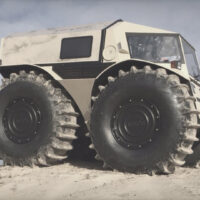In this post, we’ll delve into the world of TRAJPAR. Now I’m not talk’n about some distant galaxy, but rather a somewhat hidden parameter nested inside PTC Creo Parametric modeling software. TRAJPAR is short for Trajectory Parameter. This puppy is one of the advanced modeling goodies that allows you to turbocharge your Variable Section Sweep (VSS). The exciting thing is that with relatively little effort (aside from wading in the waters of mathematical formulas) you can model some amazingly complex shapes that are parametric and robust to-boot!
Embellishing Products With Parametrically Driven Wave Forms
Product Designers the world over are on a constant quest to make products desirable. One means to accomplish this is through finessing form. More specially, embellishing the exterior skin of products with 3D textures and repeating patterns. Actually, I’m touching on what’s known in the industry as Color, Material, and Finish (CMF) design. A quick hop over to the design blog leManoosh and you will experience a spectacle of juicy, eye-popping CMF goodness. The array of surface embellishments displayed on consumer products these days is digital artistry at its best!
Then how does one get in on the fun? First, pick your inspiration. Today we are doing ripples or waves as we find in nature such as sand dunes or water. Ripples are one of my favorite surface embellishments. Creo Parametric is perfectly suite for modeling such forms owing to TRAJPAR.
TRAJPAR + Sinewave Behavior Explained
So what is TRAJPAR and how does it work? In short, it is a parameter that mathematically varies from 0-1 over the length of a trajectory. While Creo uses the term trajectory other CAD software apps use path as the term when creating a sweep feature. When you couple TRAJPAR by way of an equation to a Variable Section Sweep (VSS) you can create some neat geometric effects!

To accomplish a wave we need an equation that includes time and a change in amplitude. A sine or cosine function is just the ticket. Have a look at the graphic below to visualize how a sinewave is plotted as a point travels around the perimeter of a unit circle. One 360 degrees revolution equals one “wave”. So, the number of complete revolutions around the unit circle over the distance of a trajectory will determine the number of ripples contained in the swept feature.

The other thing to note from the graphic is that the cosine function starts on the peak or high point of the wave which is an optimal position for setting up tangential connections with subsequent sketched entities and downstream surface features.
Turbo Charging VSS with TRAJPAR
Now that we understand the behavior of a sinewave let’s give a go at mimicking it in Creo. To help us along, I’ve modeled the rippled dish pictured below. Often while doing my best to scrape every tasty morsel of dessert out of the peaks and valleys I’d ponder how I’d go about modeling such an object. Discovering TRAJPAR was my epiphany.

Ok, time to peek inside the structure of a variable section sweep used to construct the dessert dish geometry. I’ve diagramed the equation and shown a few screenshots. Additionally, I’ve uploaded to Youtube an unedited video of the Creo modeling build. Rather than dress up the video I thought you might want to experience all the nuances of setting up and modifying the model.
Equation Anatomy






Well, that’s how you turbocharge a variable section sweep in Creo Parametric! This demo is just the tip of the iceberg as to types of advance geometry can be created using equations in combination with TRAJAR. I’ll follow up in the near future and share some of the other advanced geometries I’ve created using this modeling workflow.
Until next time, keep learning! – SkillCoach







